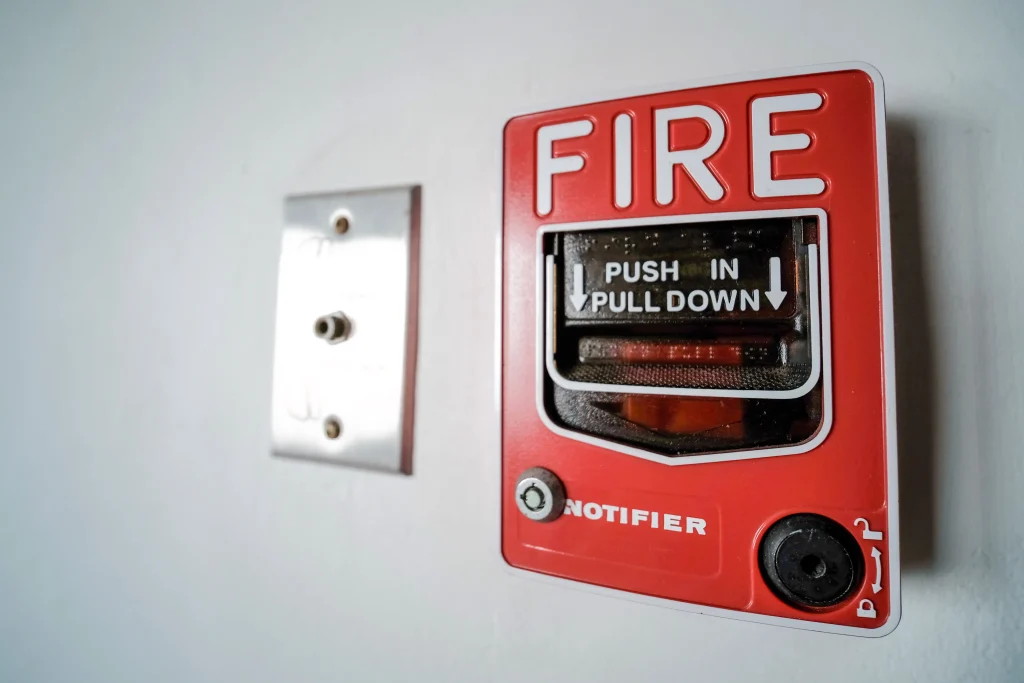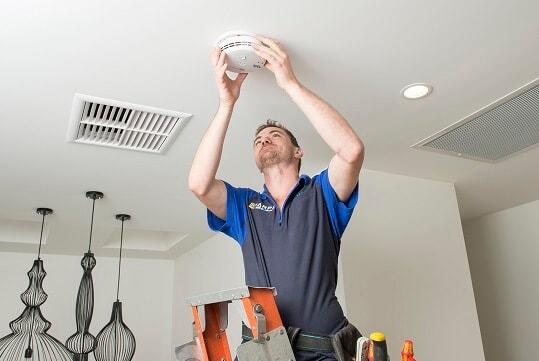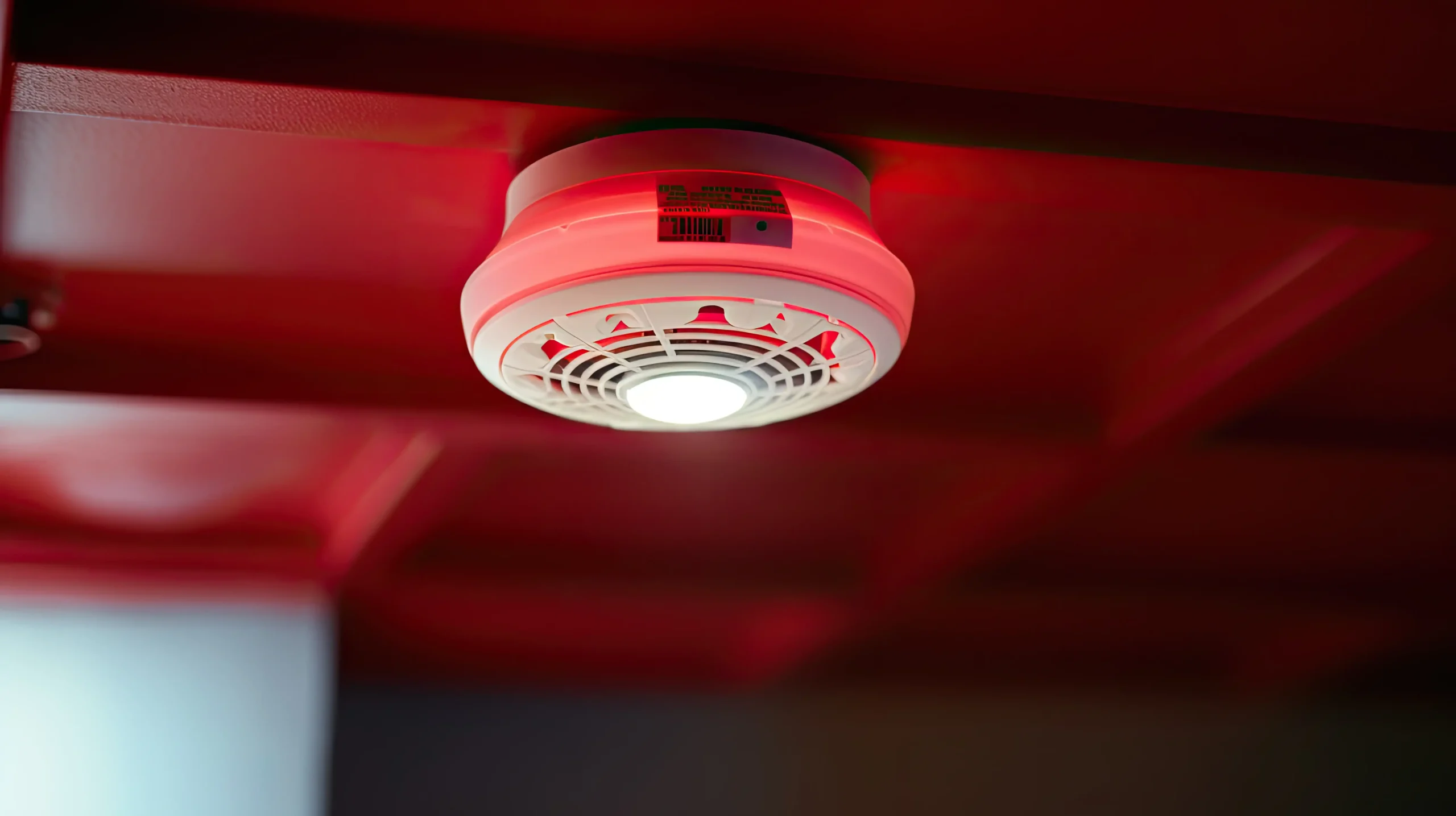Fire safety might not be the most exciting topic, but in bushfire-prone areas like Mount Barker, Albany, and the surrounding Adelaide Hills and Great Southern region, it’s absolutely critical. Picture this: it’s a quiet summer night, the cicadas are buzzing, the stars are bright – and suddenly, your smoke alarm jolts you awake with that urgent beep beep. Scary? Yes. But exactly what it’s designed to do.
Whether you’re nestled in a character home in Mount Barker or enjoying the breezy coastal charm of Albany, fire doesn’t discriminate. A working smoke alarm can cut your risk of dying in a house fire in half, according to Fire and Rescue NSW. And in regions where bushfires are a seasonal threat – like these – being prepared isn’t optional. It’s essential.
By understanding local regulations and making smart, proactive choices, you can turn your home into a fire-safe sanctuary. From fire alarm installation in Mount Barker to daily safety habits in Albany and beyond, here are seven simple but powerful ways to protect your home, your loved ones, and your peace of mind.

1. Fire Alarm Installation in Mount Barker: Meet Legal Requirements
Living in Mount Barker (South Australia) means you must follow South Australian smoke alarm laws. By law, every home needs working smoke alarms that meet Australian Standard AS3786. In practice, this means:
- Smoke alarms on every level: You need at least one alarm on each floor of your home. Make sure to put one in the hallway near bedrooms, so it wakes sleeping family members.
- Type of alarm: Newer homes (built after 2014) require hardwired 240V photoelectric alarms, all interconnected so that if one goes off they all do. If you have an older home, you can use battery-powered alarms, but when selling the home you have six months to upgrade to a compliant photoelectric system.
- Who’s responsible: As the homeowner (or landlord), you are responsible for installing and maintaining these alarms. In short: don’t leave it to chance. Call a licensed electrician or fire-safety expert in Mount Barker to help you choose and place the right alarms. It’s not glamorous, but think of it as buying real peace of mind.
By ticking off these legal basics, you’re already safer. According to local fire authorities, working alarms are essential – homes without them see a 60% higher chance of a fatal blaze. So do it right the first time and sleep easy (literally).
2. Upgrade to Photoelectric & Interconnected Alarms
Not all alarms are created equal. Many older homes had cheap ionisation alarms (which respond to flaming fires) or old 9-volt batteries. Today, experts strongly recommend photoelectric alarms. Why? Photoelectric detectors sense smouldering smoke fast – common in slow, smoldering fires behind walls or furniture. In fact, South Australian rules now demand photoelectric sensors (no ionization models) in all new installs.
Better yet, get them interconnected. That means when one alarm senses trouble, all alarms in the house shriek together. This can buy you precious extra seconds. FRNSW notes that a working, interconnected system can cut your fatal fire risk in half. Imagine the benefit: a small kitchen fire detected in the living room still alerts everyone upstairs.
If you find only old alarms in your house, think of it like upgrading an old mobile phone. Modern alarms have sealed 10-year lithium batteries or are hardwired; they won’t surprise you by dying out mid-summer. Upgrading now may cost a little, but it’s the easiest way to avoid expensive regrets later.
3. Test, Clean and Replace – Stay Vigilant
So, you’ve ticked off Fire Alarm Installation in Mount Barker — great start. But don’t stop there. Even the most high-tech alarm is basically useless if the battery’s flat or the sensor’s choked up with dust bunnies. Fire alarms aren’t “set and forget” gadgets; they’re more like tiny, life-saving roommates who need regular check-ins.
Here’s your low-effort, high-reward maintenance routine:
- Test monthly
Hit that “test” button once a month. If it doesn’t scream at you, something’s wrong. Set a recurring phone reminder or do it every daylight saving change (because let’s be real, you’ll forget otherwise). - Clean every 6 months
Smoke alarms are particle detectors, not dust collectors. A quick vacuum or soft cloth wipe every six months helps keep sensors sharp and responsive. - Change batteries yearly
If your alarm uses AA or 9V batteries, replace them yearly—no excuses. Bonus points if you switch to sealed 10-year lithium alarms, which save you the annual hassle. - Replace every 10 years
Yep, smoke alarms have an expiry date. After 10 years, the internal components begin to degrade, even if the unit still beeps. Check the manufacturing date on the back and upgrade if it’s looking ancient.
When replacing, always install alarms that meet Australian Standard AS 3786, and if you’re unsure where to start, get expert help with fire alarm installation in Mount Barker or nearby areas like Albany.
| Interval | Maintenance Task |
|---|---|
| Every month | Press the test button until you hear the alarm sound |
| Every 6 months | Vacuum or dust off smoke alarms to prevent false triggers |
| Every year | Replace batteries (lead/alkaline) |
| Every 10 years | Install a new smoke alarm unit |
These steps might sound tedious, but think of your smoke alarm as a health check-up for your home. I keep a checklist on the fridge and even involve the kids – every spring, we have a quick “fire safety drill & test”. It’s a small chore that can pay off big.
4. Plan Your Escape Route
Smoke alarms are one part of staying safe; you also need a plan. The South Australian Country Fire Service (CFS) urges every household to practice escape routes and drills. Here’s what to do:
- Know two exits: Identify two ways out of each room (normally a door and a window). Make sure windows open easily.
- Meet-up spot: Pick a safe meeting point outside (a neighbor’s house or the end of the driveway).
- Rehearse the drill: Once a year (or every six months), do a mock evacuation in under two minutes. Make it a game with the kids.
- Call triple zero: Remind everyone that once safely outside, the first thing is to call 000 for help.
If the alarm ever sounds, leave immediately. Don’t grab stuff, don’t re-enter – go! CFS stresses that with smoke spreading fast, “go, go, go” is the rule. My family actually makes it fun: the loser has to make pancakes breakfast (and trust me, no one wants to do the dishes!). The point is, when fire strikes, you won’t need to figure things out on the fly.
5. Mind Your Cooking and Electrical Habits
After installation and planning, everyday habits are your next line of defense. Surprisingly, half of all house fires start in the kitchen. (If you’ve ever walked away from dinner only to hear the microwave beep, you know how easily that can happen.) To avoid a disaster:
- Stay in the kitchen: When cooking on the stove or BBQ, never leave it unattended. Even a minute away can let a grease fire get out of control. Keep flammable items (tea towels, wooden spoons, pot holders) well away from hot burners.
- Electrical safety: Faulty wiring and overloaded outlets cause ~40% of home fires. Use a qualified electrician for any rewiring or to add power points. Don’t daisy-chain power boards or run cables under rugs. Install switchboards in serviceable locations. If you smell burning plastic or see flickering lights, switch off and get it checked.
- Heating and electrical appliances: Keep heaters (electric or gas) at least two metres from curtains, furniture or any combustibles. Turn off and unplug them at night or when you leave home. For example, electric blankets should always be turned off before you sleep – those cosy winter wrinkles aren’t worth a risk.
By forming these safe routines, you’ll cut risks dramatically. Even something as simple as “standing by the pan” when cooking or putting phone notifications to remind you to switch off heaters can help avoid emergencies.
6. Create Defensible Space & Be Bushfire Aware
Mount Barker’s beauty comes with fire risk. We live amidst bushland where fire danger is real – the Adelaide Hills are usually under a declared Fire Danger Season from mid-November to mid-May. Beyond smoke alarms, prepare your property:
- Vegetation management: Keep your garden tidy. Remove dry leaves from gutters and roofs (embers can ignite them), mow long grass, and trim overhanging branches. SA authorities suggest at least a 10m clear “hazard-free” area around your home, with plants that won’t easily burn.
- Home hardening: Embers can slip through any gap. Seal gaps under eaves, use fine mesh on vents, and consider shutters on windows if you’re in a high-risk zone.
- Stay informed: Pay attention to CFS alerts and total fire bans. If the forecast is extreme (40°C+ with northerly winds), remember even electrical storms can start fires.
Living in Mount Barker means balancing country life with caution. By clearing flammable debris and planning ahead, you’ll help shield your home from wildfires. (And always keep that smoke alarm in top shape before fire season – no excuses!).

7. Equip Your Home and Seek Expert Checks
Finally, treat your home like a safety fortress, not just with alarms but with other tools:
- Fire extinguishers & blankets: Every home should have a working fire extinguisher (check it annually) and a fire blanket in the kitchen. In a small stove fire, these can suppress flames until help arrives. Place them where they’re easy to grab.
- Regular professional inspections: Consider a safety visit from professionals. For example, Fire and Rescue NSW offers Home Fire Safety Visits to advise on hazards – check if your local fire brigade has a similar program. At minimum, have a licensed electrician inspect your alarms and wiring every few years. They can spot issues you might miss (like outdated wiring or incorrectly placed alarms).
- Stay connected: Ensure your phone chargers are not left under pillows, and keep emergency numbers handy. Sometimes prevention is about common sense – I always advise my friends not to prop burning candles in hallways or near curtains (less candlelight, more peace of mind!).
Remember: smoke alarms are your early warning, but a full safety net includes these extra layers. They won’t add much to your grocery bill, but they might one day save it – and far more.
Conclusion
Fire safety isn’t a set-and-forget deal. It’s a lifestyle—one built on preparation, smart habits, and knowing your local risks. Whether it’s fire alarm installation in Mount Barker, replacing old detectors in Albany, or chatting with neighbours about fire drills, every step helps reduce your risk dramatically.
In regions like Mount Barker, Albany, and the surrounding Adelaide Hills, these seven simple strategies could mean the difference between a close call and a devastating loss. So, double-check those alarms, talk with your household, and stay proactive.
You don’t need to live in fear—just with a little more foresight. Stay smart, stay safe, and sleep soundly knowing your home is protected.
FAQs
Is a smoke alarm mandatory in South Australia?
Yes. South Australian law requires a working smoke alarm on every level of a home. Alarms must meet Australian Standard AS3786 (photoelectric type). Homeowners (or landlords) must install and maintain them, and failure to comply can result in fines.
How often should I test or replace my smoke alarm?
Test your smoke alarm monthly by holding the test button until it beeps. Clean or vacuum it every 6 months. Replace standard batteries yearly (or use sealed 10-year batteries). Importantly, replace the entire alarm every 10 years to ensure reliability.
Where should smoke alarms be installed?
Place alarms on each floor of the home and especially in hallways outside bedrooms. In SA, newer homes need mains-wired, interconnected alarms. Avoid installing alarms right next to the kitchen or bathroom vents (to reduce false alarms). Follow Australian guidelines: one outside sleeping areas and in living areas, ensuring full coverage.

